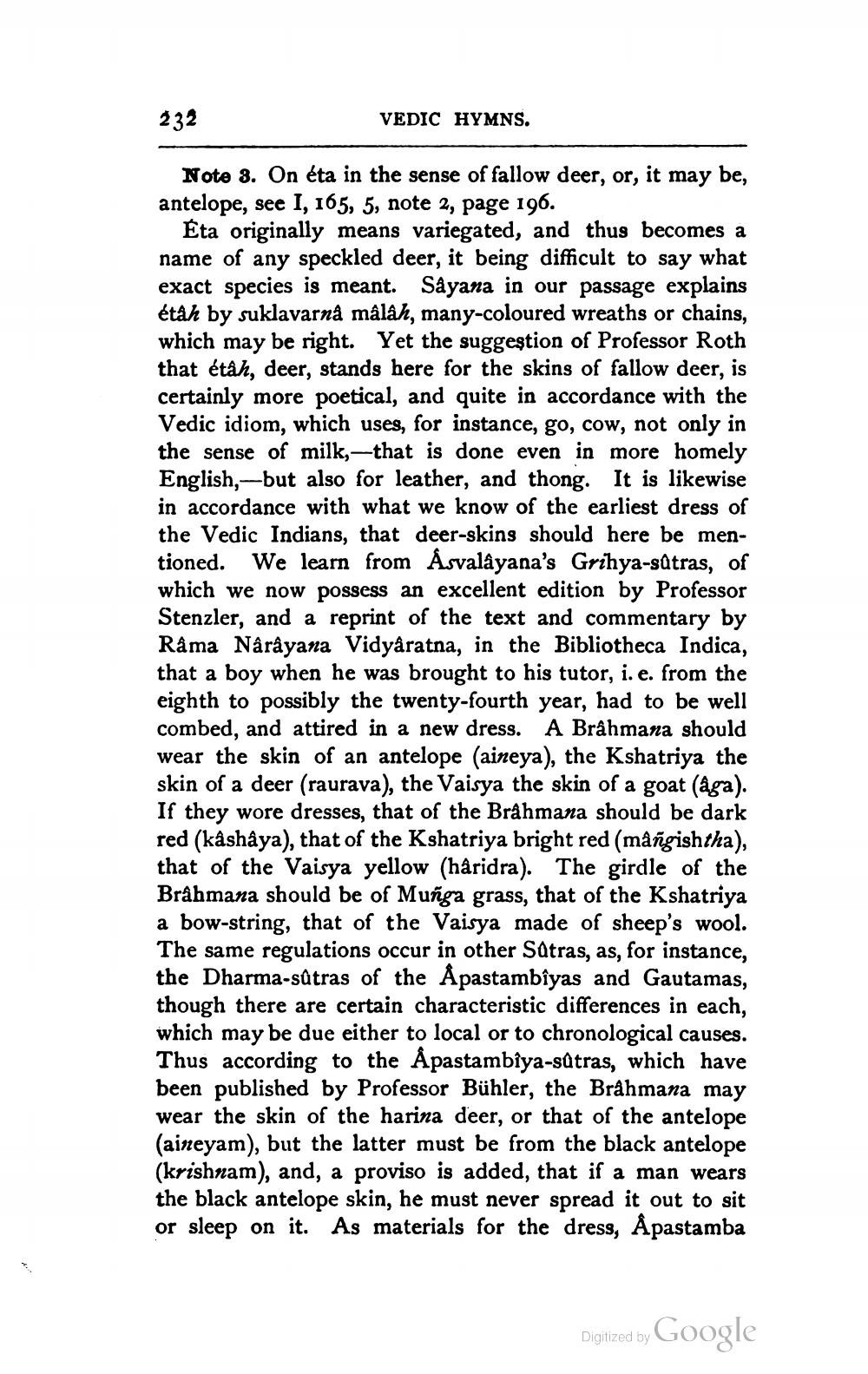________________
232
VEDIC HYMNS.
Note 3. On éta in the sense of fallow deer, or, it may be, antelope, see I, 165, 5, note 2, page 196.
Éta originally means variegated, and thus becomes a name of any speckled deer, it being difficult to say what exact species is meant. Såyana in our passage explains étah by suklavarnâ mâlâh, many-coloured wreaths or chains, which may be right. Yet the suggestion of Professor Roth that étåh, deer, stands here for the skins of fallow deer, is certainly more poetical, and quite in accordance with the Vedic idiom, which uses, for instance, go, cow, not only in the sense of milk,-that is done even in more homely English,-but also for leather, and thong. It is likewise in accordance with what we know of the earliest dress of the Vedic Indians, that deer-skins should here be mentioned. We learn from Asvalâyana's Grihya-sätras, of which we now possess an excellent edition by Professor Stenzler, and a reprint of the text and Råma Narayana Vidyaratna, in the Bibliotheca Indica, that a boy when he was brought to his tutor, i.e. from the eighth to possibly the twenty-fourth year, had to be well combed, and attired in a new dress. A Brâhmana should wear the skin of an antelope (aineya), the Kshatriya the skin of a deer (raurava), the Vaisya the skin of a goat (aga). If they wore dresses, that of the Brahmana should be dark red (kashầya), that of the Kshatriya bright red (måñgishtha), that of the Vaisya yellow (hâridra). The girdle of the Brahmana should be of Muñga grass, that of the Kshatriya a bow-string, that of the Vaisya made of sheep's wool. The same regulations occur in other Satras, as, for instance, the Dharma-sútras of the Åpastambîyas and Gautamas, though there are certain characteristic differences in each, which may be due either to local or to chronological causes. Thus according to the Åpastambiya-satras, which have been published by Professor Bühler, the Brahmana may wear the skin of the harina deer, or that of the antelope (aineyam), but the latter must be from the black antelope (krishnam), and, a proviso is added, that if a man wears the black antelope skin, he must never spread it out to sit or sleep on it. As materials for the dress, Åpastamba
Digitized by
Digized by Google




